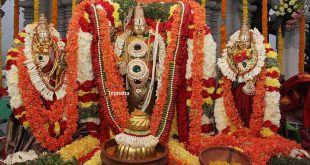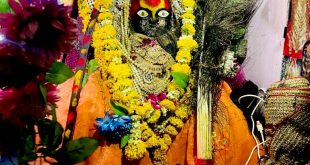Grishneshwar Jyotirlinga History and Temple Architecture
Lord Shiva and Goddess Parvati were living in the Sahyadri Range, near Shivalaya. Goddess Parvati mixed vermillion with Shivalaya water, the mixed vermillion transformed into a Shivalinga. The Shivalinga formed after rubbing vermillion, that’s why name came up Grishneshwar, where Grish means friction / rub in Sanskrit. And this Shivaling came from Vermillion, i.e., Kumkum in Sanskrit, that’s why another name also came Kumkumeshwar Jyotirlinga.
Grishneshwar Jyotirlinga History
A Sudharmana brahman was living in the Shivalaya village, with his wife Sudeha. She had convinced him to marry her sister Ghushma to get a child, because Sudeha didn’t have any and hence she used to be very moorse.
Ghushma was a great devotee of Lord Shiva and so used to make Shivaling from mud and worship it. After the worship, she would do the visarjana in Shivalaya Sarovar, i.e., immerse the Shivalinga in Shivalaya Sarovar. As the time passed Ghushma got a son and again after some time he grew up and later got married. Sudeha become envious of Ghushma. Sudeha killed her son while he was sleeping and thrown pieces of body in Shivalaya Sarovar. Next morning, Ghushma started his puja, she made a shivaling from mud, worshipped it, and she went to do visarjana of Shivalinga. She saw her son was coming out and later she saw Lord Shiva with trident in full of anger. Lord Shiva narrated her about Sudeha and wanted to kill Sudeha with his Trident. Ghushma requested to Lord Shiva to forgive her and Lord Shiva should make this place his abode. Lord Shiva accepted her request and manifested as the Jyotirlinga, with the name of her, i.e., Ghushmeshwar Jyotirlinga.
No Yajnas or ritual sacrifices are performed since it represents the agni tattva, i.e., fire element, one of the five fundamental forces of nature as per Hinduism, in the Grishneshwar Jyotirlinga Temple.
The Temple faced much destruction during Delhi Sultanate ruler. The temple was rebuilt by Maloji Bhosale in the 16th Century. Temple was attacked even after this. The current temple structure, Rani Ahilya bai Holkar from Indore, renovated this temple during the downfall of Mughal Empire.
The Grishneshwar Jyotirlinga Temple is the smallest Jyotirlinga Temple. Temple constructed in the traditional South Indian Temple Architectural Style. The Shikhara has intricate carvings of Dashavatars of Vishnu, various legends of Lord Shiva along with five-storey building height. The Grishneshwar Mahadeva is eastward facing, and the Nandi bull is in the court hall.
How to Reach Grishneshwar Temple?
- By Airport: Aurangabad Airport at 30 KM.
- By Railways: Aurangabad Railway Station at 35 KM.
- By Roads: Maharashtra State Road Transport Corporation is very well connected with this city to major cities of Maharashtra.
 Hotel Booking, Tour and Travel Planning, Online Tickets Tour Planning, Designing Packages, Hotel Booking
Hotel Booking, Tour and Travel Planning, Online Tickets Tour Planning, Designing Packages, Hotel Booking


